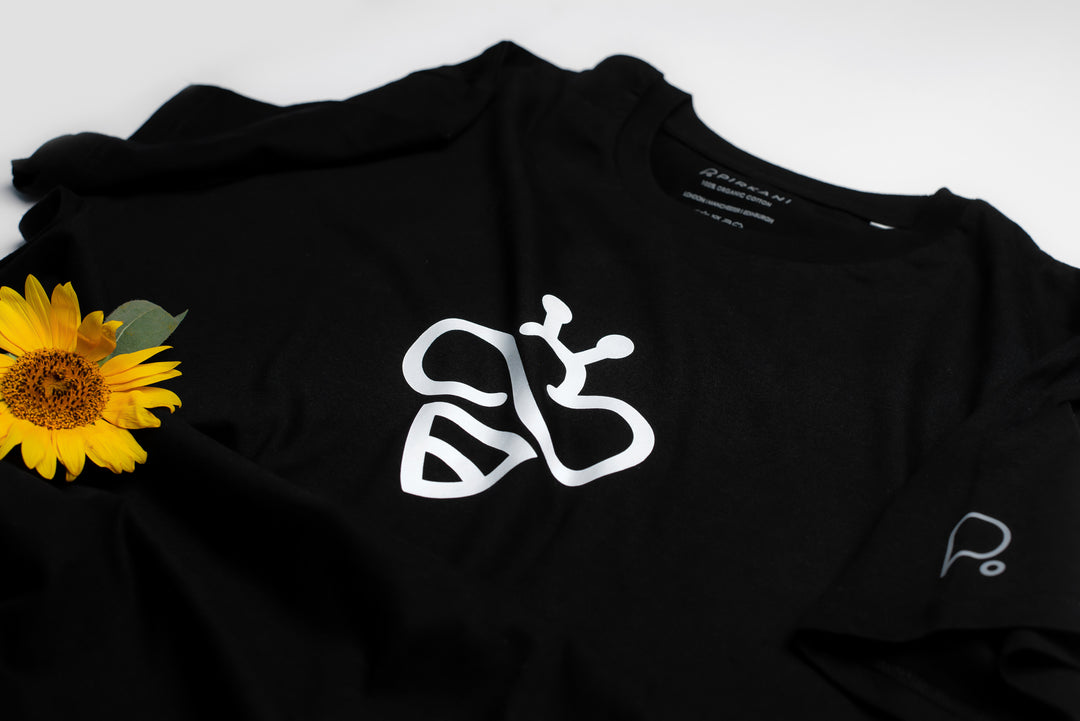What is ethical and sustainable fashion? The hallmarks of sustainable development

Ethical fashion, sustainable fashion, eco-friendly fashion… These terms represent alternatives to fast-fashion, which has taken over the fashion industry in the last two decades. While they all have many things in common, they each have a distinct definition, encompassing solutions to slightly different problems in the current fashion supply chains. Before digging into these fashion business models' benefits and characteristics, we first need to highlight some differences between them.
Ethical fashion focuses on social altruism and covers protecting the rights of workers and animals involved in the production chain. It centres around minimising harm to the people making the garments and avoiding animal cruelty in the supply chains.
Eco-friendly fashion strives to make the production of our clothing better for the planet. Its main concerns include the industry's carbon footprint, the release of toxic chemicals into the eco-system, use of materials that require a large volume of natural resources or pollute the environment such as plastic.
Sustainable fashion can be best understood when referring to the three pillars of business sustainability: environmental, social, and economical. Therefore, sustainable fashion encompasses all the efforts of ethical fashion and eco-friendly fashion and an economic aspect that lies in making sure the practices are suitable for the local economy and can keep the company in business.
In this article, we'll talk about promises and the landscape offered by the sustainable and ethical fashion industry and emphasise how it seems to be the most all-encompassing alternative to fast fashion. We'll also give a shout-out at how beginners can support sustainable fashion.
Sustainable materials
The materials used to make a garment decide a lot about its sustainability. Sustainable fashion usually opts for natural fibres such as organic cotton, linen or hemp, and human-made innovations such as Tencel and recycled fibres from items that would otherwise be sent to landfill.
Regular cotton and virgin synthetics are usually excluded from the list of fabrics best suited for sustainable development. Their production and disposal take a substantial toll on the environment (and, especially in non-organic cotton, on the people involved in the production process).
Designed to last
A big part of sustainable development is making sure that the things we use have a long lifespan, and this is reflected in the design process of sustainable fashion. Garments are most sustainable when they last us for a long time.
This includes the quality of stitching; and timelessness of the look. Fast fashion usually ensures you keep buying more and more things by making their pieces trendy, so that they're out of season as soon as possible. Sustainable fashion does the opposite of this, ensuring the design can be work for years or even decades, and the quality of the fabric will match.
Gentle on the planet & safe for the people
Sustainable fashion stays away from toxic chemicals used in the fast fashion production chains. These include pesticides, herbicides, or insecticides from crop production and dyes and other chemicals like formaldehyde used in factories.
Therefore, people working in sustainable fashion production chains are safe from being exposed to these chemicals and shielded from the suffering associated with chemical poisoning. The leaking of chemicals from farms and factories is also prevented, protecting local communities and the region's ecology.
Jobs that are worth having
To strive for sustainable development in the countries that make the clothes we wear, we need to provide them with jobs worth having, rather than the exploitative practices of fast fashion.
Sustainable fashion gives workers jobs with safe working conditions, fair treatment from management and fair financial rewards. Factories are inspected to be structurally safe and monitored to prevent child or slave labour. The working hours are reduced, compared to the 14-16 hour working days fast fashion usually demands of factory employees.
Rather than exploiting the population, sustainable fashion provides its workers with positions they can benefit from – both financially, and career-wise. Sustainable fashion brands often screen any of their suppliers to meet the same criteria, so that you can rest assured your garments were produced entirely with sustainable practices.
How to support sustainable fashion
Supporting sustainable fashion is a great decision to make – but where do you start? Here are a few beginner-friendly tips.
-
Use what you have – one of the easiest ways to make your closet more sustainable is to make the best use of the clothing you already own. Before you discard a garment, make sure it's been used, loved, and is now beyond repair, and please recycle.
-
Only buy what you need – fast fashion makes us buy clothes we don't need, by creating an urgency to purchase new arrivals with various sales and offers. Ever wondered why fast-fashion brands would push two weekly notifications about new products and sales? That's to create the fear of missing out and have us buy clothing on a whim, even when we don't need it.
-
Shop second-hand – if you're on a tighter budget, shopping second-hand is one of the best ways to keep sustainable. The clothing you buy likely won't be the same quality as a fresh one, but the price tag and impact on the eco-system will be much lower.
-
Avoid greenwashing – one of the main reasons you'll want to stay away from brands that aren't being transparent is greenwashing. This shady marketing tactic, used by brands who wish to get in on the sustainable fashion trend without actually doing any work, aims to present themselves a more sustainable company than it is. Make sure not to fall into the trap and look for the origin of your clothes.
-
Support transparent, sustainable brands – when you do buy clothing, make sure it comes from sustainable brands you can trust. Most sustainable fashion brands are transparent about their practices and provide much information on their website; you can also reach out to them for more details. If a brand is not being transparent, it's best to stay away.
-
Support small and new brands- sustainable fashion companies are relatively recent and small start-ups doing their best to protect the eco-system. We can tell you; it breaks a sweat to launch a sustainable fashion brand because most (if not all) of the current practices from sourcing to fulfilment are unsustainable and unethical. Best to do your small bit to support them for an eventual change.






Leave a comment